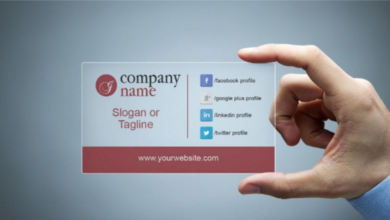What is the Correlation Between Face Swap and Deepfake?

Facial swapping has grown slowly from simple fun into an enabler of deepfake videos, making a great impact in the areas of media, entertainment, and cybersecurity. Whereas it was considered a way to swap faces with your friends on social media, AI has advanced it further into other more complex levels that may be dangerous, for example, deepfakes. These deepfakes use face-swap technology to create very realistic and sometimes misleading content. An understanding of the correlation between face-swap and deepfake technologies is what is important in considering the benefits and risks these innovations bring about in today’s digital landscape.
Emergence of AI Face Swap: From Filters to Fakes
AI Face Swap originated from an online community sensation for creating funny, harmless content. Equipped with machine learning algorithms, Face Swap lets users upload photos and switch faces with others. Snapchat and Instagram became hugely popular, offering users a wide array of face-swapping filters and making the technology go viral in an instant. But as the face-swap AI got better, so did its ability to create ultra-realistic fake media. As the technology of AI face swap continued to improve, the door swung wide open for more and more questionable uses: everything from digital doppelganger celebrities to, quite seriously, misleading political content.
How Face Swap Technology Paved the Way for Deepfakes
The face-swap technology has been one of the major contributors to deepfakes by placing a premise for face-swapping abilities onto video formats. While it is about replacing one person’s face with another on images over the internet, the deepfakes take this altogether to the next level by using AI to develop videos that appear real. The videos manage to successfully marry speech synthesis with facial movements into a very close-to-reality reproduction. The AI face swap technology is possible because neural networks are trained to match one person with another regarding facial expressions and movements. Much of the realism in deepfakes today owes its debt to the progression of face swap technology that, in essence, provides a framework for such manipulations.
Societal Concerns of Face Swapping in the Deepfake Generation
Although face swap technologies improved entertainment, their use to create deepfakes raised ethical issues. The misuse of this technology is tantamount to identity theft, false information, and online defamation. Face swapping can be used to create situations of an individual in videos they have never been a part of. This becomes even more challenging in situations where political figures, celebrities, or private individuals are inserted into fake videos that may lead to scandals or misinformation. Therefore, considering the relationship between AI face swap technology and the creation of deepfakes means this development has to address ethical concerns, especially about violating privacy or losing control over one’s image.
Role of Face Swap in Cybersecurity Threats
All this face-swapping and deepfake technology has developed some pretty serious cybersecurity threats. Deepfake videos, therefore, come into being with the use of AI face swap techniques and are being considered in different fraudulent activities that also include phishing scams and identity theft. Traditional identification can be easily bypassed as this may get very convincing. For instance, AI-generated face swaps can trick biometric security systems-a situation that raises serious concerns for sectors reliant on facial recognition technologies for verification of identity. Besides, face-swapping in deepfakes is being weaponized to spread misinformation in political campaigns and to gain the confidence of people. The gamut of these threats runs the full range from developing stronger detection tools that can distinguish real from fake.
Solutions to Mitigate the Risks of AI Face Swap and Deepfakes
As one might understand, the relation of face-swap technology to deepfakes now makes sense, and thus solutions to mitigate the involved risks must be immediate. Online face-swap tool developers should have ethical guidelines in place to ensure the technology does not fall into the wrong hands. Some technologies, like blockchain and AI-based detection algorithms, can be employed to verify the authenticity of the videos. Similarly, awareness through campaigns will also be needed to show the dangers that face-swapping and deepfakes present. In turn, governments and regulatory agencies should engage in making laws that deal with the use of AI face swap technologies in questionable ways. This, together with all other efforts, will help contain the negative consequences of this technology while preserving its benefits.
Future of Face Swapping and Deepfake Technologies
In the future, face-swap and deepfake technologies are bound to undergo or implement even more advanced AI mechanisms that allow the creation of truly realistic digital content. While AI technology is improving each new day, the role of face swapping will continue to play a key role in such fields as entertainment, education, and treatment, with further developments possibly being created in virtual reality and interactive media. Nevertheless, the link between face swap technology and deepfakes will still be connected with a huge concern, especially in cybersecurity. Thus, innovations in detection and regulation are sure to balance the creative potential of face swapping without being overcast by the prospect of its abuse. After all, responsible usage will decide whether these technologies continue to have a positive impact or a harmful one.




